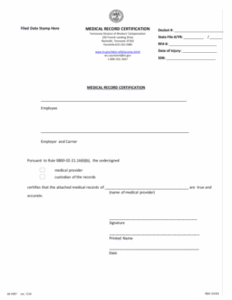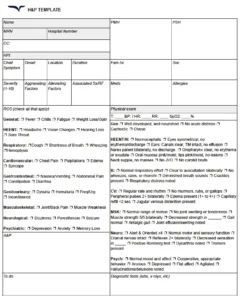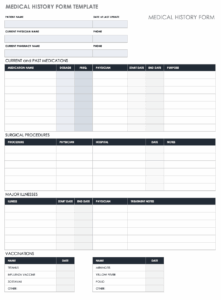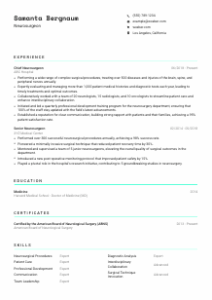Exploring the complexities of neurological conditions like seizures requires a deep dive into individual experiences, medical histories, and the multifaceted impact on daily life. Gathering this crucial information isn’t always straightforward; it demands a structured approach to ensure consistency, accuracy, and comprehensiveness. Without a well-thought-out plan, researchers might miss vital details or struggle to compare data across different participants, hindering the progress of valuable studies.
This is precisely where a meticulously crafted research survey template on seizures becomes indispensable. Such a template serves as the backbone of any study, guiding investigators through the myriad of questions necessary to paint a complete picture of the condition from the patient’s perspective. It helps standardize data collection, making it easier to identify patterns, evaluate treatment effectiveness, and ultimately contribute to better understanding and management of seizures.
Designing a Comprehensive Survey for Seizure Research
Creating a truly effective survey for seizure research begins with clearly defining your study’s objectives. Are you aiming to understand triggers, assess the impact of medication, or explore the psychological effects? Your goals will dictate the types of questions you need to ask and the depth of information required. It is also crucial to consider your target audience – are you surveying patients, caregivers, or healthcare professionals? Tailoring your language and complexity ensures that respondents can accurately understand and answer your questions, leading to more reliable data.
Once your objectives are set, you can begin to outline the key areas of inquiry. A robust template should cover a wide array of topics, from basic demographic information to intricate details about seizure episodes, associated symptoms, and treatment regimens. Think about how a person’s daily life is affected, what warning signs they might experience, and how they cope with the challenges. Including questions about their quality of life, mental health, and social interactions can provide invaluable qualitative data that complements the quantitative findings.
It is also important to consider the structure of your questions. A mix of closed-ended (multiple choice, Likert scales) and open-ended questions can yield both quantifiable data and rich narrative insights. Closed-ended questions are excellent for statistical analysis, allowing you to easily compare responses, while open-ended questions provide participants with the space to elaborate on their unique experiences, often revealing aspects you might not have considered. Ensuring clarity and avoiding jargon are paramount to make the survey accessible to all participants.
Finally, ethical considerations must be at the forefront of your design. Protecting participant privacy, ensuring anonymity or confidentiality, and obtaining informed consent are non-negotiable. Clearly explain the purpose of the study, how the data will be used, and the participant’s right to withdraw at any time. Building trust is essential for encouraging honest and comprehensive responses, which in turn leads to more meaningful research outcomes.
Essential Sections to Include in Your Template
- Demographic Information: Age, gender, ethnicity, educational background, occupation.
- Seizure Characteristics: Type of seizures, frequency, duration, age of onset, specific triggers.
- Medical History and Medications: Diagnoses, other health conditions, current and past anti-seizure medications, dosages, side effects.
- Triggers and Warning Signs: Identification of common triggers (stress, sleep deprivation, flashing lights), presence of auras or prodromal symptoms.
- Impact on Quality of Life: Effects on education, employment, social activities, daily routines, driving, and relationships.
- Treatment Efficacy and Side Effects: Perceived effectiveness of current treatments, challenges with medication adherence, and adverse effects experienced.
- Psychological and Social Aspects: Experiences with anxiety, depression, stigma, support systems, and coping mechanisms.
Maximizing Data Collection with Your Seizure Research Survey
After painstakingly developing a comprehensive research survey template on seizures, the next crucial step is its implementation. Before launching your survey to a wider audience, it is highly recommended to conduct a pilot test with a small group of individuals who represent your target demographic. This preliminary run can reveal ambiguities in questions, identify technical glitches, or highlight areas where clarity can be improved, ensuring a smoother and more effective experience for future participants. Their feedback is invaluable for refining the survey’s flow and ensuring all questions are easily understood.
The method of distribution plays a significant role in the reach and success of your data collection. Online survey platforms offer a convenient and efficient way to gather responses, allowing for wider geographical reach and often providing built-in data analysis tools. However, for certain populations or sensitive topics, direct interviews or paper-based surveys might be more appropriate. Collaborating with healthcare providers, patient advocacy groups, or support organizations can help you connect with the right participants and build trust within the community.
Once data collection is underway, think ahead about how you will analyze the information. Plan for both quantitative analysis of numerical data and qualitative analysis of open-ended responses. Sophisticated statistical software can help identify trends and correlations from the quantitative data, while thematic analysis can uncover profound insights from the personal narratives shared in the qualitative sections. Understanding how to integrate these different data types will give you a richer and more complete understanding of the topic.
Remember that research is often an iterative process. Even with a well-designed template, new insights might emerge during data analysis that suggest areas for future exploration or refinement of your existing questions. A flexible approach to your research design allows for continuous learning and adaptation, ensuring that your work remains relevant and impactful. Your survey template is not a static document but a living tool that can evolve with your research questions and the growing understanding of the condition.
Best Practices for Survey Distribution and Engagement
- Utilize secure online survey platforms that ensure data privacy and compliance.
- Collaborate with healthcare professionals and patient organizations to reach relevant participants ethically.
- Clearly communicate the purpose of the survey, the estimated completion time, and how the data will be used.
- Offer options for participants to ask questions or seek clarification.
- Consider incentives, if appropriate and ethical, to encourage participation and completion.
- Ensure the survey is accessible to individuals with varying levels of digital literacy or physical abilities.
A well-crafted survey is more than just a list of questions; it is a powerful instrument for discovery. By meticulously designing each section and considering the nuances of the participant experience, researchers can gather the comprehensive and reliable data needed to advance our collective understanding of seizures. This careful attention to detail ensures that the insights gained are robust and truly reflect the experiences of those living with the condition.
Ultimately, the findings derived from such thorough research have the potential to significantly impact clinical practice, inform policy decisions, and foster the development of more effective treatments and support systems. Every piece of information collected, carefully analyzed, contributes to a larger tapestry of knowledge, bringing us closer to improving the lives of individuals affected by seizures worldwide.



